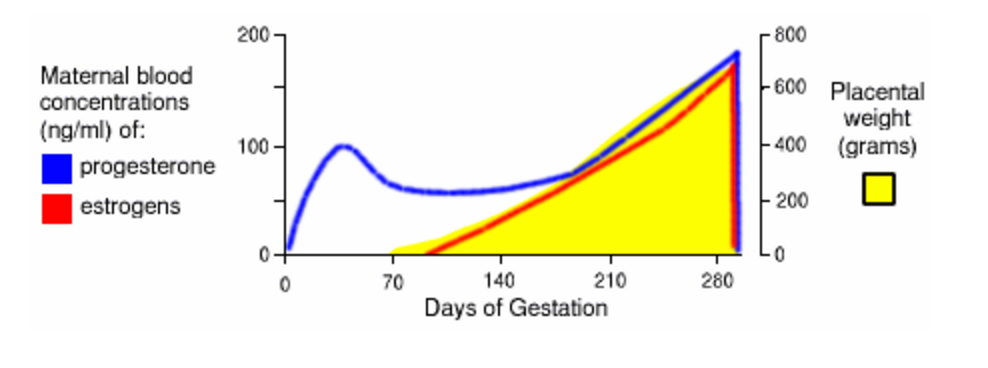I am creating a new online quiz, and as I compiled the reasons behind various conditions- PMS, infertility, postpartum depression, disruptive menopause- one reason was dominating the answer field: low progesterone.
I don’t know why the sheer dominance of the pattern just hit me now after years of research! Hopefully I can save YOU a few more years of hormonal confusion with this article. This article is suitable for women in any stage of life!
What is Progesterone?
Progesterone is a hormone made primarily in the ovaries by the corpus luteum (the tissue left behind after you release an egg at ovulation). It is also made by the adrenal glands, and if you are peri-menopausal or menopausal with infrequent or no ovulation, then you really rely on the adrenals as a source of progesterone.
Progesterone has various functions in the body:
After your ovulate, it helps ‘ripen’ your uterine lining, preparing for a possible pregnancy
Raises your basal body temperature in the second half of the cycle
Serves a precursor hormone to cortisol, your energy/stress hormone made by the adrenal glands
Lifts you mood and calms your body
Benefits sleep
Prevents water retention
Helps the cells utilize fats
Helps maintain blood sugar levels
You can surmise by the list above that if you are low in progesterone, you may have some of the opposite effects- bloated, moody, can’t sleep, craving sugar, gaining weight, and periods are irregular or heavy.
How Does Low Progesterone Happen?
Low progesterone can occur for many reasons that are very common in modern life, which is likely why I am seeing this pattern so frequently with my clients.
1. Estrogen Dominance
Estrogen dominance is both a cause and a result of low progesterone.
It’s a cause because you can get too high in estrogen due to carrying excess body weight, and your fat tissue produces estrogen. Even if you are thin, you can put yourself into excess estrogen if you have high blood sugar and insulin resistance. Insulin resistance is a state in which your cells block insulin from getting inside because your blood sugar is too frequently too high.
Symptoms of blood sugar dys-regulation include: feeling hungry all the time, getting very irritable if you miss a meal (or a snack), fatigue, weight gain around the middle, acne.
The most common hormonal disorder amongst women of reproductive age is PCOS, or polycystic ovarian syndrome. In this condition, there is insulin resistance, high androgen production, and disordered function of the ovaries. This often leads to missing or infrequent ovulation. As you learned already, most of our progesterone is made after you ovulate, so you don't ovulate, then you won't make much progesterone, and you'll be in estrogen dominance.
Another major disruptor are xenoestrogens, which are synthetic compounds that activate estrogen receptors in the body.
Some key sources of xenoestrogens are:
Commercially-raised meat and dairy products
Medications, including birth control pills
Non-organic foods (with traces of pesticide)
Soft plastics
Shampoos, body lotions and perfumes (contain xenoestogenic compounds unless all natural)
Tap water
Food additives
Bleached tampons and sanitary pads
You can see that it’s easy to get exposed to a lot of xenoestrogens in day! The xenoestrogens in your body confuse the feedback loop between your brain and your ovaries. If your liver is overloaded, you won’t break down these xenoestrogens well, and they can get stored up in fat tissue (hello, belly fat) for you body to handle later.
Here’s an article by the Environmental Working Group if you’d like to deepen your research on this topic.
Even if you don't have excess estrogen, if progesterone is low, you can still end up in estrogen dominance.
Estrogen and progesterone play a seesaw game over the course of a month, and over the course of your life as a woman. Estrogen is needed to stimulate your ovaries and grow your uterine lining in the first part of your cycle. This strong first half leads to strong progesterone in the second half, unless something goes wrong. The following points can all be causes of low progesterone.
2. Poor Nutrition
With the busyness of modern life, it’s easy to choose processed foods, caffeinated drinks and sugary pick-me-ups. Living in a grind, without time to reflect and connect, can also draw us towards ‘comfort food,’ or that after-work glass of wine.
Besides these easy-to-make poor choices of modern life, even organic food is not as nutritious as it used to be, due to decreased soil quality. And let’s face it, we don’t alway eat organic, whether it’s because we don't have access, we can’t afford it or we’re eating out.
The last point I’ll mention here is weak digestion. When we’re stressed, have taken antibiotics, don’t chew our food, etc., we aren’t getting the most out of the food we eat.
How does this contribute to low progesterone? We need certain ingredients to make and utilize hormones. You need enough B6 and cholesterol for progesterone production, but there is more to it than that. All our micronutrients (vitamins and minerals) and macronutrients (protein, fat and carbohydrates) are needed for the proper functioning of our coordinated hormonal system.
3. Stress
You are a highly productive woman, but you are likely under chronic stress. (If not, congratulations!) Stress can come from so many places: your commute, the chemicals in your environment, a tense relationship, an undiagnosed dental infection, etc. Chronic stress makes your adrenal glands react with a high level of cortisol…at least at first. In this stage you may feel wired, not be able to sleep, not be able to focus on sex, feel anxious, etc.
As you learned earlier, progesterone is a precursor to cortisol. So if you are making lots of cortisol, is it fair to assume that your progesterone level is being affected? Yup.










